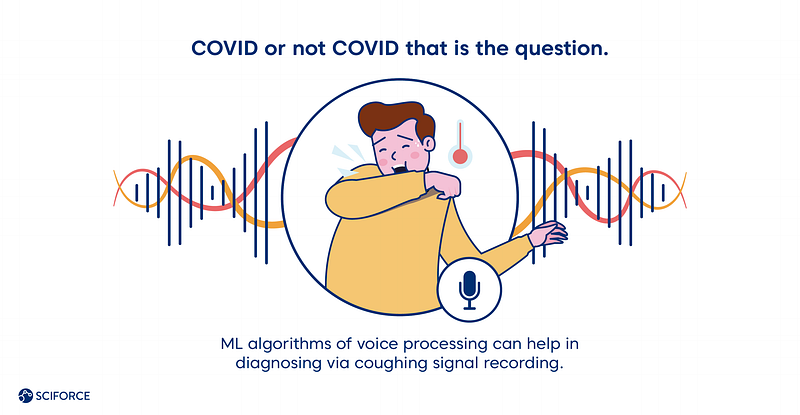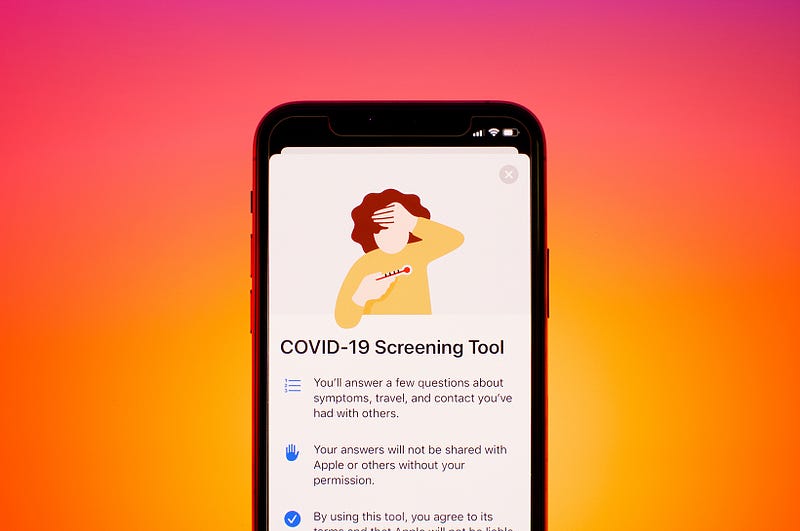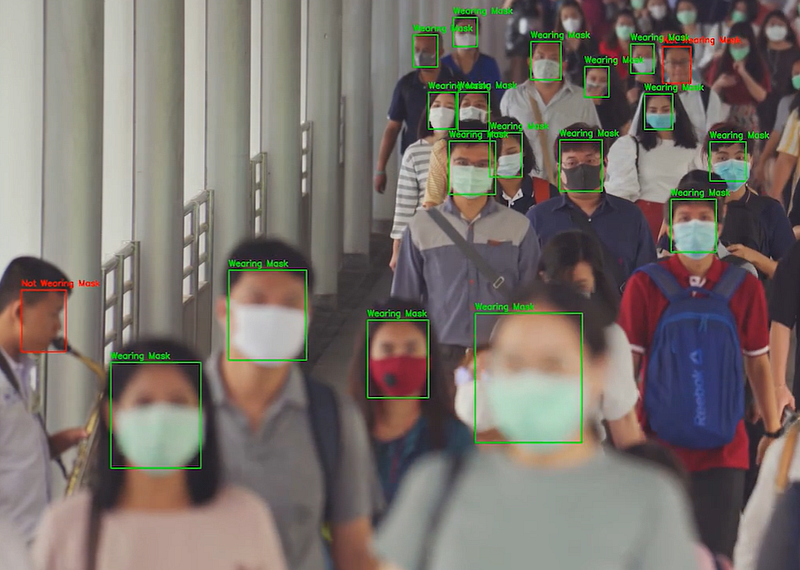The medical application of machine learning and AI is one of the most principal and fast-growing fields of our expertise. Following the global rush to minimize the coronavirus crisis effects, SciForce can not stay behind in the tremendous eHealth development.
The Severe Acute Respiratory Syndrome CoronaVirus 2 (SARS-CoV-2), popularly known as COVID-19, has become a matter of great concern globally since the end of 2019. While Pfizer-BioNTech, Moderna, AstraZeneca, and Sinovac vaccines have become household names and bring some light at the end of the tunnel, we’ve got more tasks to solve. Patients’ diagnosis, treatment, and monitoring cause enormous pressure on healthcare providers worldwide. Healthcare software development turns out to be on the frontline. Given the pandemic peculiarities, the latest approaches of ML & AI have come to tackle the challenge.
Read on to find out the latest AI & ML corona-driven applications for the eHealth industry to understand and fight the virus.
The efficient testing of the population is key to curbing the spread of coronavirus. However, the available tests are not meeting the demand and resolving the problem to the end. RT-RCP aimed at the viral RNA is a time- and costs-consuming variant and is not widely applicable. Rapid antigen test detects the viral proteins but still is not a precise and guaranteed answer. The antibody test is only relevant to people who have already undergone the COVID-19.
Per recent research, AI algorithms can diagnose the virus without using the RT-RCP test. Thus, machine learning algorithms detect coronavirus via blood or urine tests, analyzing the samples to predict COVID-19. The data received from the patient’s blood test stands as the base for neural network analysis for RT-RCP test prediction based on the blood test parameters. ML algorithms of voice processing can help in diagnosing via coughing signal recording. Medical wearables are also widely used in telehealth systems and could be helpful for diagnostics. Hence, virtual visits to health care providers become possible thanks to the natural language processing algorithm. The Health Center of the Medical University of South Carolina stands as a good example.

Mobile phones serve as great data-generating tools providing immediate access to the potential coronavirus hosts, and opening the window of opportunities for epidemiological control as some Pacific Asian governments demonstrate it.
In constant vital resource scarcity, machine learning algorithms can assist in multi-criteria decision-making for healthcare providers. It is beneficial when it goes about detecting and predicting the disease severity. Thus, medical personnel can prioritize the patients to respond to coronavirus disease and its outcomes. Text processing can help to compare the treatment plans and predict the patient’s recovery. Patient prioritizing is particularly crucial in the state of the breathing equipment scarcity.
ML algorithms assist the selection criteria for such existent treatment practices as antibodies circulating blood transfusion. In this case, ML helps to detect whether a subject meets blood donor selection criteria and selects the most suitable plasma.

Telehealth gets a new dimension and scope with the pandemic outbreak and promises to show even more tremendous applications soon
Deep learning algorithms demonstrate efficacy in predicting patients’ severity, mortality, and recovery. In March 2020, the researchers in Wuhan, PRC used the clinical variables of almost 200 hospitalized patients to develop a deep-learning algorithm and risk stratification score system to predict mortality.
One can use the same idea for predicting the disease severity of the patient. It helps forecast the coronavirus effects using clinical and laboratory data like a blood test or even voice signal.
Thus, telehealth has a new dimension and scope with the pandemic outbreak and promises to show even more tremendous applications soon. Combining classical epidemiological methods with deep learning algorithms, and natural language processing to process electronic health records using other sensors (temperature, color sensor, camera, and microphone) can cause a paradigm shift for the eHealth industry. So, researchers in Spain show that using clinical variables of more than 10000 patients like age, fever, and tachypnea (abnormal respiration rate) to detect whether a person needs immediate intensive care unit admission.

Tracing the person’s contact and offering tools for a self-assessment come as one of the possible applications
Social distancing, contact tracing, and identifying COVID-19 cases are the crucial steps to keep the reproduction rate small. AI methods of large amounts of data processing come as a powerful tool for large-scale problem-solving. Tracing the person’s contact and offering tools for a self-assessment come as one of the possible applications.
Policymakers can use different AI techniques to provide physical distancing among the population, along with surveillance video analysis (PRC), gathering spatiotemporal data provided by mobile phones, and identifying whether a person wears a facemask automatically. Interesting that deep learning methods like computer vision for facemask identification applied for the first time.

Deep learning methods like computer vision for facemask identification applied for the first time /Image source
The hidden danger of this pandemic is the fact that a lot of COVID-19 cases are asymptomatic. ML methods help create mobilized assessment centers based on spatio-temporal data of individuals analyzed. Developing self-organizing feature maps (SOFM) to monitor the epidemic in live time and a particular place is possible. Thus, one can build a projection model for a community spread among the population of a city.

ML methods help create mobilized assessment centers based on spatiotemporal data of individuals analyzed
It is better to predict the problem than to deal with its consequences. However, 2020 showed the globe that we still have a lot to work on for a reliable prognosis. There is not much data on the AI and ML methods to predict the pandemic humankind can face in the future. Meanwhile, the tremendous development of the vaccine and lateral applications for coronavirus diagnosis, treatment, and monitoring shed some light on the overall picture.
AI-based technologies have become great solutions for COVID-19 detection without RT-RCP testing. They assist in multi-criteria decision-making for healthcare providers, overcome the limitations, and predict the upcoming epidemiological scenarios. It is all already happening now.
SciForce is ready to face the challenge and join the frontline to develop solutions for coming challenges. The power of science has always empowered people to strive, especially during the last couple of years.